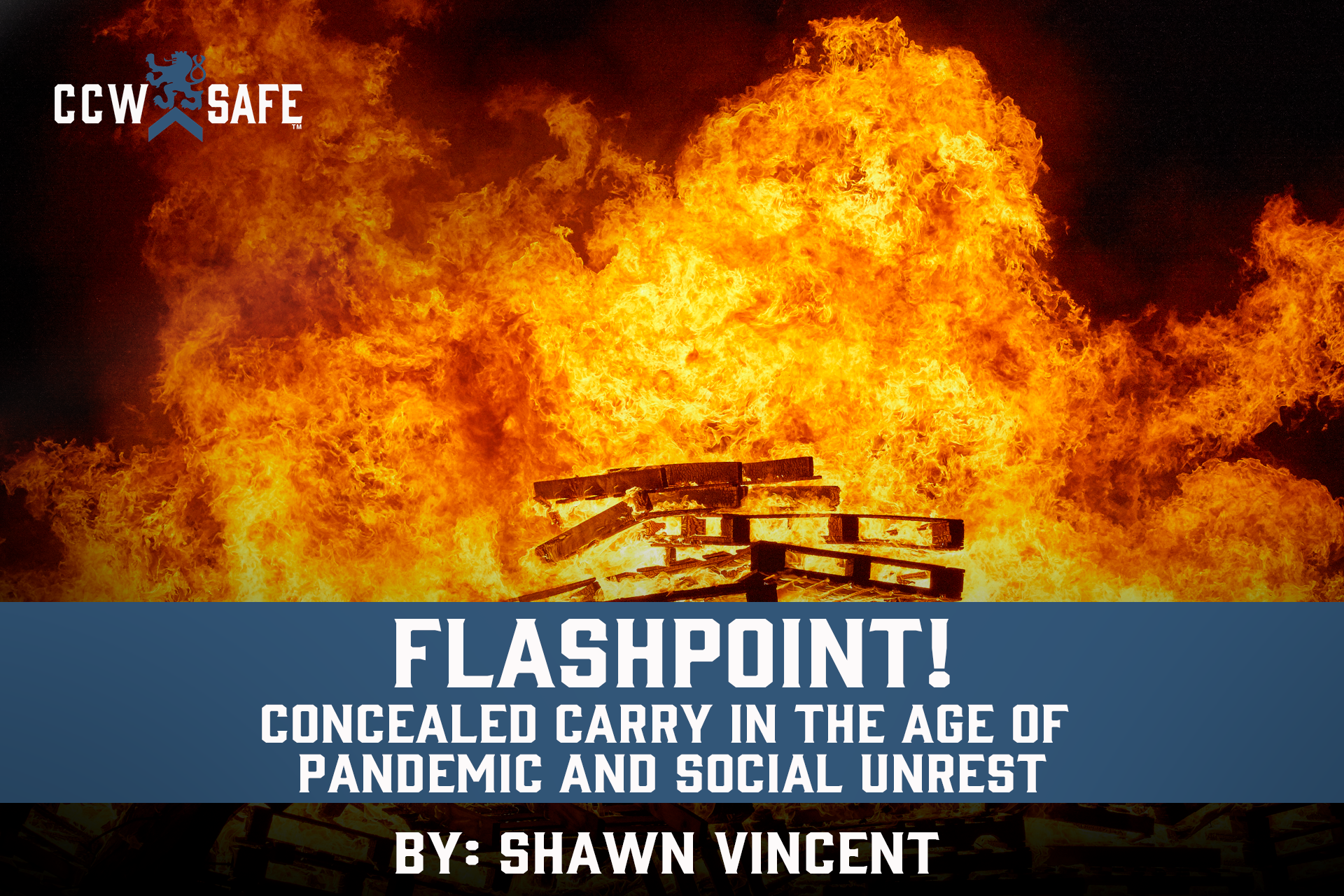
Posted on August 7, 2020
Flashpoint! Concealed carry in the age of pandemic and social unrest
Flashpoint!
Concealed carry in the age of pandemic and social unrest
It’s turning out to be a long, hot summer.
The headlines have been packed with stories about protests — some peaceful, some violent. We’ve seen marches against racial injustice; we’ve seen demonstrations against lockdown restrictions. In some places where it’s legal, we’ve seen armed protesters. We’ve also seen bystanders brandishing weapons at demonstrators. In Austin, Texas, we saw a gun-carrying protester and an armed passerby collide, with a tragic loss of life.
I recently spoke to Don West about some of these incidents. Don is National Trial Counsel for CCW Safe and an experienced criminal defense attorney. “We have the uncertainty of the pandemic,” Don says, “the uncertainty of economic consequences, and underneath that is this resurgence of a focus on issues with the police and issues with racial inequality. There are so many flashpoints.”
For the last several years, I’ve written articles about home defense, about road rage incidents, about encountering assailants in public places. I’ve not written about armed confrontations between politically motivated parties. I’ve written about people who defended their homes against one or two intruders, but I’ve never written about defenders protecting their homes against angry mobs.
Steve Moses is a veteran of law enforcement and a well-regarded weapons instructor. He has been training with renown firearms experts for more than twenty-five years, and he says that no one he trained with in all that time contemplated seriously the possibility of operating in a group of protesters or warding off crowds of dissidents. It wasn’t a reality then.
But it’s something to think about now.
Here are some headlines that have recently caught my attention:
“Neighbors Protect Seattle Police Chief’s Home From Mob of Protesters”; “Man Caught on Camera Brandishing Rifle at Protest Charged With Assault With Deadly Weapon”; “Heavily Armed Protesters Gather at Michigan Capitol to Decry Stay-At-Home-Order”; and “Local Revolutionary Black Panther Chapter Responds to Armed Protest in Louisville.”
There are plenty more. Notably, “Felony Charges Filed Against St. Louis Couple Who Pointed Guns at Protesters” and “Garrett Foster Brought His Gun to Austin Protests. Then He Was Shot Dead.”
The first headline is about a couple who live in an exclusive community in St. Louis. Protesters entered the gated community intent on demonstrating in front of the mayor’s home, but first they had to pass the McCloskey’s property. Mr. McCloskey greeted the protesters with a rifle, Mrs. McCloskey with a pistol. Video shows them both point the weapons at the demonstrators. They’ve been charged with the unlawful use of a weapon — a felony. Mr. McCLoskey told Fox News, “It’s a totally upside-down world. The prosecutor apparently thinks her job isn’t to keep us safe from criminals, but to keep the criminals safe from us.”
The second headline is about a man named Garrett Foster who participated in a Black Lives Matter march in Austin, Texas. He chose to carry his AK-47 during the march, as it was his legal right to do in Texas. When a rideshare driver encountered the crowd, protesters began “beating” on the vehicle. Garrett Foster approached the driver’s window. In the dark, dressed in a tactical vest, Foster looked like a police officer. When the driver realized Foster wasn’t law enforcement, he felt threatened by the masked, rifle-wielding protester. He drew his pistol and fired, killing Foster. So far, the shooter has not been charged.
As Steve Moses suggested, gun owners and concealed carriers are encountering scenarios that few have trained for or even imagined.
While the potential armed scenarios concealed carriers might face are changing, legally, Don West says, “The rules are still the same. They apply consistently everywhere, and that is: You can only use deadly force in the face of an imminent threat of great bodily harm or death.” While there are slight variations and codicils from one jurisdiction to another, this is the standard for justifying the use of deadly force, and it applies if a defender encounters a lone assailant — or an entire crowd.
Over the next several weeks, I’m going to take a close look at the Foster and McCloskey cases with input from Don West and Steve Moses. We’ll use what we know about these real-life scenarios to extract lessons and propose a set of best practices for concealed carriers during this time of pandemic and social upheaval. As usual, we’re going to urge caution and stress avoidance whenever it is possible to safely do so. This way, if you have to make the life or death decision to use deadly force in self-defense, you can do it with more confidence that you are legally justified.
Steve Moses suggested that the tense cultural situation is like an extended drought in a grassland; it only takes a small spark to set a raging fire. Don’t be the spark. Steve says concealed carriers “need to be constantly looking at the situation and trying to make the best decision knowing that, at the end of the day, the thing they really need to do is protect themselves, they need to protect their families, and they need to do so in a manner that’s intelligent, and moral, and lawful and, hopefully, avoid the traps that can await us when we start working through that legal system.”
 |
SHAWN VINCENT- LITIGATION CONSULTANTShawn Vincent is a litigation consultant who helps select juries in self-defense cases, and he manages public interest of high-profile legal matters. If you have any questions for Shawn, or would like more articles like this, let us know belo |